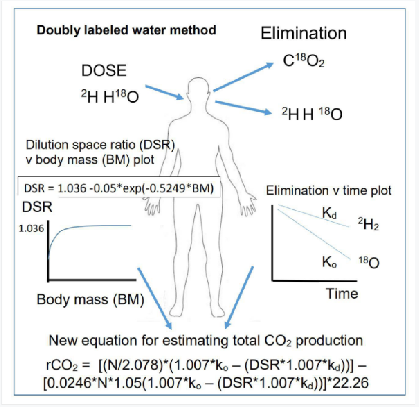Researchers Defined A Standard Calculation Methodology for Human Doubly Labeled Water Studies
Date:01-03-2021 | 【Print】 【close】
Measuring the energy expenditure of individuals is routinely performed by measuring gas exchange. However, to do that subjects need to either wear a hood or live in a confined chamber. Both of these things greatly restrict what individuals can do. Hence measurement of routine energy demands using these methods is problematical. There is an alternative method that is based on the differential elimination of oxygen and hydrogen isotopes that is called the doubly-labeled water or DLW method. The beauty of this technique is that individuals drink some dose water and then they can go about their daily lives taking periodic urine samples which are used to measure the isotope washout rates. Because the isotopes that are used are stable, completely safe and has been used in many different situations including premature babies. It has even been used to measure the energy demands of Giant pandas!

Graphical Abstract-New Equation for Estimating Total CO2 Production (Image by SIAT)
Although this method is the gold standard for making free-living energy expenditure measurements, there is actually no consensus on the exact equations that should be used to convert the isotope measures into the final expenditure estimate. Different labs use different calculations. It has been long suspected that these calculations may produce different answers, but nobody checked it out. Now a consortium of users led by Professor John Speakman from the Shenzhen Institute of Advanced Technology, Chinese Academy of Sciences has compiled a database of over 5500 measurements using the technique that has been sponsored by the International Atomic Energy Agency (IAEA) (https://www.dlwdatabase.org/). The first paper using the database has been to resolve the impact of the different calculation methods.
Using the raw data and the database consortium were able to recalculate all the measurements using one standard equation and then look at how far out the original measurements were to this standard. But the first problem was what equation to choose as standard? To solve this they used the database to derive a new equation which performed better than all the other available equations in published validation studies.
The new equation was then tested against all the original calculations. The result showed that previous estimates were on average in different by 1-4% but occasionally up to 20%. These differences could compromise making comparisons across studies.
John Speakman said: "Compiling the DLW database was a major effort by a large number of people – particularly the database management group and the IAEA. However, the effort is now bearing fruit. We have defined a new equation for use in all future DLW studies and this has allowed us to recalculate all the previous studies in the database to facilitate analyses of data combined across different studies, to answer the big questions in energy balance and nutrition."
The new equation is published in the Journal Cell Reports Medicine. Speakman et al (2021) "A standard calculation methodology for human doubly labeled water studies" CRM 2: 100203.
Media Contact:
SUN Lujia
Email: lj.sun@siat.ac.cn
Download the attachment:
A standard calculation methodology for human doubly labeled water studies